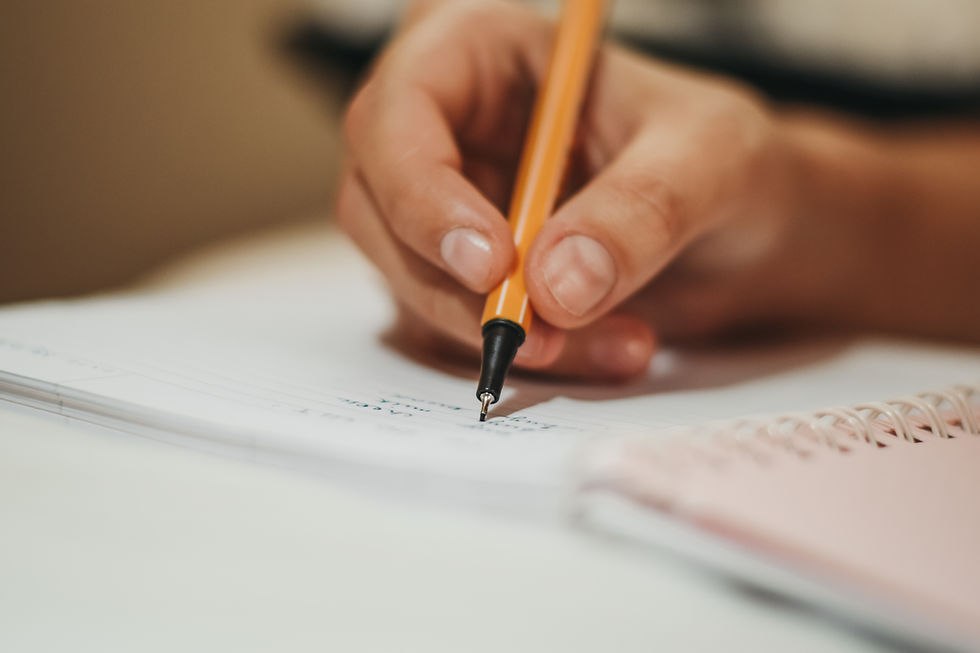Get Started on Recording Your Thoughts in 3 Easy Steps
- Jasmine Tsang
- Mar 12, 2023
- 3 min read
Congratulations for achieving the first step of thought recording: getting started. Starting a new habit is tough but if you're here reading this article, then you are aware of the benefits in recording your thoughts. For those who don't know, thought recording can help improve awareness of yourself and help you analyze your mental health more systematically. It's difficult to untangle your mind because you cannot "see" what is going on, so thought recording acts as your vision to your concerns.
I want to help you get started on thought recording as easy as possible, so here are the 3 easy steps:

1. Find a convenient medium that works
Your thought recording medium can be in many forms - word document, notepad, notebook, an app, agenda, calendar, and more. There is no one 'right' way and the most important thing is that it's accessible, easy to reach, and not cumbersome. This is important is because starting a new habit is already tough and you want to make thought recording as easy and little effort as possible. The easier it is, the less effort it is, the higher your likelihood of maintaining this habit. I would personally suggest using a traditional small and portable notebook that you can carry anywhere so you can record your thoughts on-the-go. I like writing it down more than using an app is because I find pages are easier to flip through to analyze my thoughts and it minimizes distractions.
2. Set a consistent routine
Consistency is the key to success. Using exercising as an analogy, you will only get results when you are exercising daily for 20 minutes consistently instead of once a month for 4 hours. Thought recording doesn't have to be a 1-hour job - it only takes a total of 10 minutes per day. Reflect on your daily schedule and determine what time(s) of the day is ideal for you to record your thoughts. I would recommend setting time aside twice a day, perhaps once at lunch and once before bedtime. If you are really busy, you can record all your thoughts at the end of the day. The key here is to find the perfect consistent schedule for you.
3. Be systematic in recording your thoughts
You need to include the following content: date & time, triggering events, thoughts, and emotions for thought recording analysis to be effective. Typically the content is organized in a chart as it is easiest to read, however, you may alter how to systematically organize your thoughts that is best suited for you. Some prefer writing a short diary, using a mindmap, or illustrations. The most important thing here is that it includes date & time, triggering events, thoughts, and emotions and it is systematic. Without a system, your thought records will be in disarray, which makes it more difficult for you to analyze your thoughts and therefore, you have wasted your efforts in recording. Once a system is developed, you will be efficient in recording your thoughts. Below is an example of a chart in recording thoughts:

Very simple right? Just remember the three things: convenient, consistent, and systematic. Once you have mastered these three components, thought-recording will be a breeze.
About The Author

Jasmine Tsang is a Registered Psychotherapist (Qualifying) under the College of Registered Psychotherapist Ontario (CRPO) and the founder of Reflections Therapy. She specializes in providing counselling services for people facing challenges in their adulthood such as relationships, self-esteem issues, school & career stressors, anxiety, and depression. For more information about Jasmine, click here to read her bio.



コメント